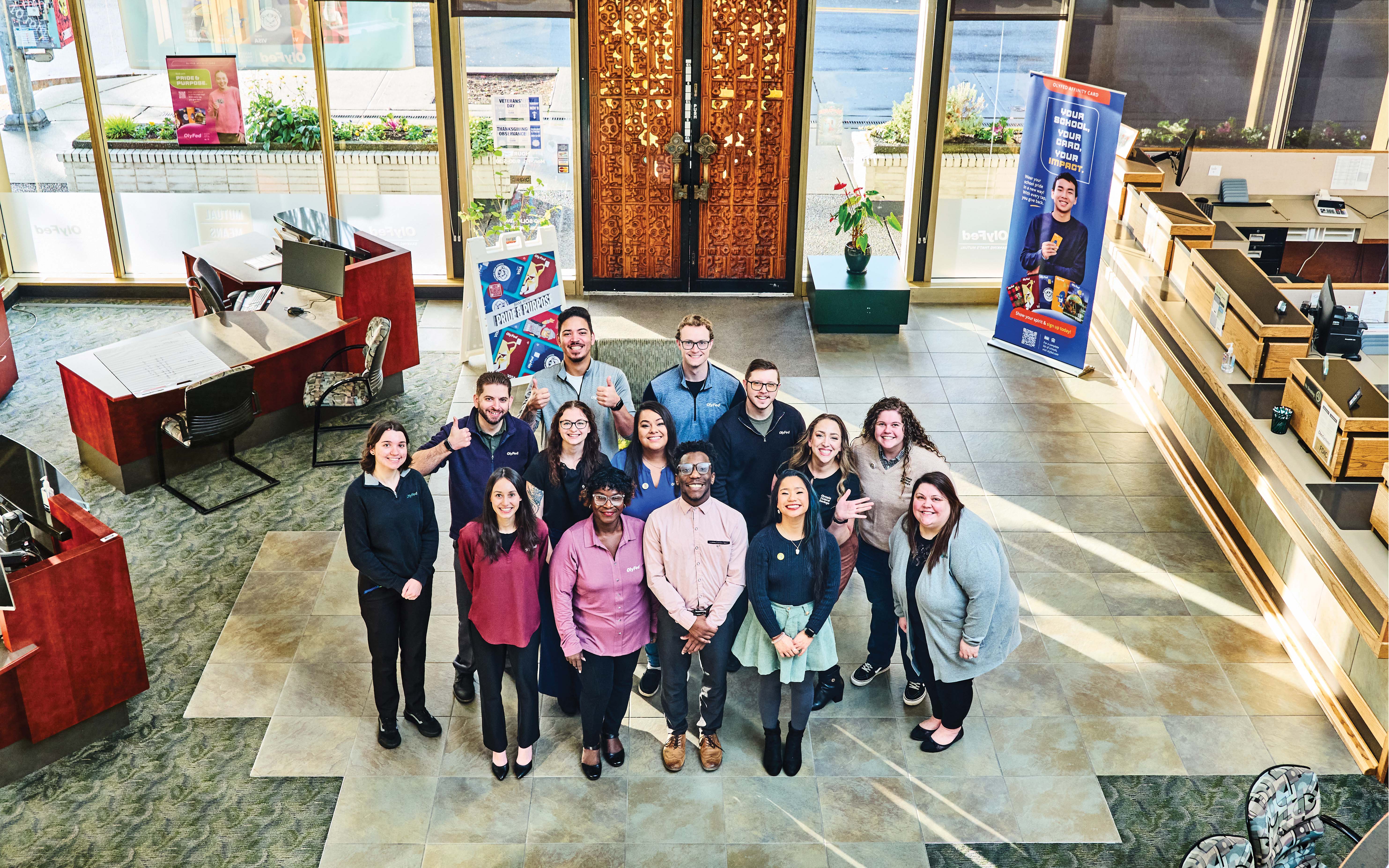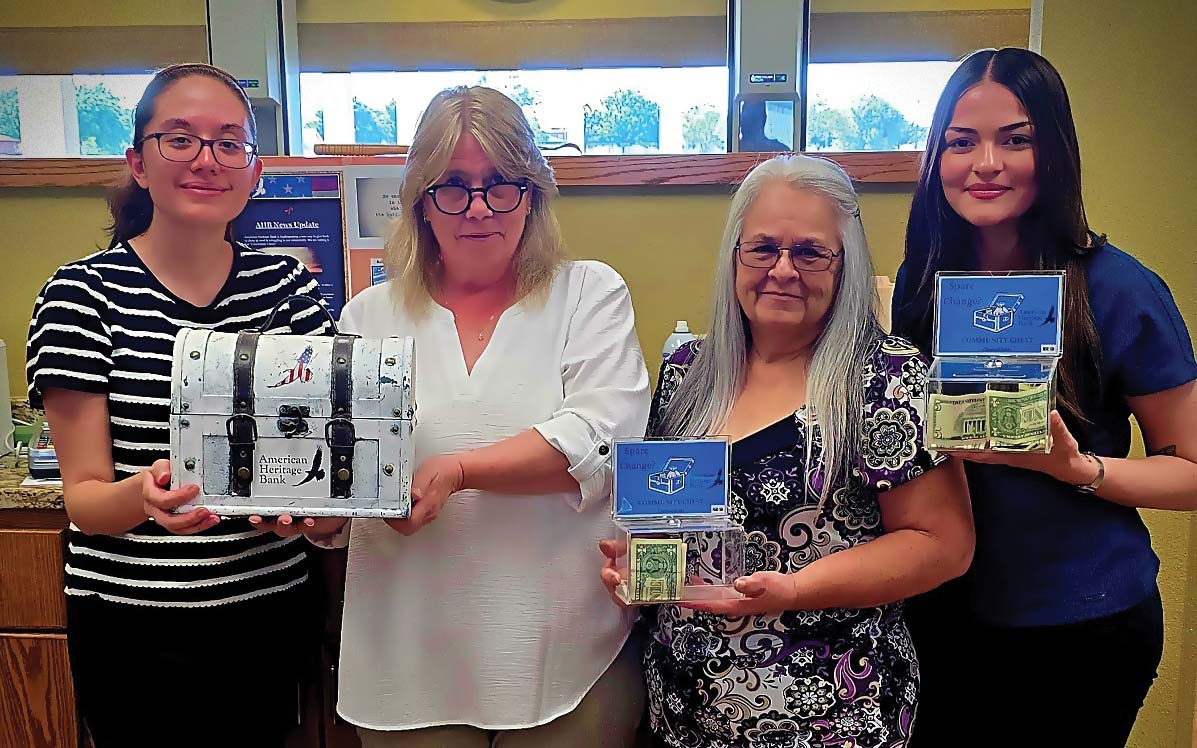Every time a community bank celebrates a significant anniversary, it’s a reminder that our relationship-based business model transcends time and generations. Here, ICBA recognizes and honors its member banks’ 100th, 125th and 150th anniversaries. Read on for stories of how their impact and expertise have persevered through each new year, decade and century.
Member Milestones 2024: Steadfast Banks for Modern Times
August 06, 2024 / By Roshan McArthur
Every time a community bank celebrates a significant anniversary, it’s a reminder that our relationship-based business model transcends time and generations. Here, ICBA recognizes and honors its member banks’ 100th, 125th and 150th anniversaries. Read on for stories of how their impact and expertise have persevered through each new year, decade and century.
As every Community banker knows, developing and maintaining the signature community bank connection is no small feat. Community banks must take the bull by the horns—knowing, serving and advocating for their customers—to support and better their local businesses, economy and neighbors.
That’s why it’s with great pride that ICBA is recognizing an exceptional 59 members reaching their 100th, 125th and 150th anniversaries of establishing connections in their communities. We spoke to four of these longtime community banks to learn about their toughest challenges, greatest victories, and how they weathered storms and shifted with the times.
150 years
WNB Financial; Winona, Minn.


The year was 1874. The Civil War had been over for nine years, and the first transcontinental railroad was five years old. The country was still reeling from a financial crisis the previous year when, in July, the Great Plains were invaded by a swarm of locusts. In a world dogged by recession and plagued by omnivorous grasshoppers, 10 ICBA member banks came into existence.
On July 1, 1874, Winona Savings Bank opened its doors at East Second Street in Winona, Minn. Its first president was William Mitchell, a judge on the Supreme Court of Minnesota. Then, at the turn of the century, one of the best-known entrepreneurs in southeastern Minnesota, J. R. Watkins, bought a substantial stake in the bank. Clearly, these were competent stewards, as the now $562 million‑asset community bank went on to survive two world wars, the Spanish Flu and the Great Depression.

“Earlier this year, when we celebrated our 150th anniversary, I said that COVID was actually our second pandemic, so we've been around that long,” laughs David Vaselaar, current president and CEO.
He notes that community banks are experienced at overcoming challenges, among them the large consolidation of banks over the course of Winona Savings’ 150-year tenure.
“I think it's a real testament to us to not only be one of those banks that have survived all of those challenges, but to have done it as an independent community bank,” Vaselaar says. “I think that's pretty rarefied air.”

He attributes the bank’s longevity to a commitment from shareholders, the board of directors and coworkers, as well as its spotlight on clients. “There's a really big focus on our clients, both on the retail and business banking side,” Vaselaar says. “We just want to help them grow, help them achieve their financial goals and dreams. Their victories are our victories.”
After 143 years in business solely in Winona, the community bank recently adopted a new name, WNB Financial, and broadened its horizons. “We're now in four locations, two in Minnesota and two in Wisconsin,” says Vaselaar. “I think we felt that to remain independent, we needed to continue to grow. We knew that growth had to come from outside of our home market. It’s really been good to get into new markets and bring our brand of independent banking to them.”
A 150-year-old paper trail
The Bank of Marion in Marion, Va., has a strong tradition of documenting its history and handing down generational knowledge from one leader to the next. In its archives, you’ll find all the minutes that have been recorded by the bank’s board of directors since the community bank’s inception in 1874. In 1993, bank president Robert Garnett used those minutes to compile a written history of the bank, documenting the achievements of founder Minter Jackson, the precise amount the bank was founded with ($869.34) and much more.
So, it’s not surprising that, in honor of its 150th anniversary, The Bank of Marion plans to bury a time capsule containing contemporary banking items, publications from local and regional news outlets, and other items that are representative of the community bank’s 2024 financial, business and cultural worlds.
“We thought it would be interesting and important to put one together,” says Sam Russell, vice president and director of marketing at The Bank of Marion. “Of course, we'll protect the location so no one can mess with it. The information as to where it is will be stored in our vault. And then, in 50 years, the time capsule can be opened, and it will contain items that are representative of who we were in 2024. It will give a picture of how our world was.”
The Bank of Marion; Marion, Va.

Farther south, The Bank of Marion was born in southwest Virginia. Given the precarious state of the economy in 1874, locals were concerned about the bank’s long-term prospects, but its founder, Minter Jackson, was one of the wealthiest men in the area and knew a thing or two about economics. He, his board of directors and employees watched the economy pick up again, and the bank flourished along with it.

Today, The Bank of Marion boasts $557 million in assets, 19 branches and offices in southwest Virginia and upper east Tennessee.
Current president and CEO Chris Snodgrass recalls assuming the presidency in January 2020. “In my first shareholder meeting,” he says, “I referenced the fact that the bank had made it through the Spanish Flu, we made it through the Great Depression, we made it through World War I, World War II. And we were going through a lot of change and uncertainty in 2020.”

Snodgrass notes that The Bank of Marion has maintained its culture throughout. “And I do believe those conservative ways, the old sayings, have been passed down from president to president. I attribute our longevity to that,” he says. “We've always had a very good, supportive board of directors comprised of local businesspeople, and I think that has helped as well. And that tone from the top extends down throughout the organization.”

He says The Bank of Marion found success in its foundational values of determination, optimism and the steadfast commitment to excellence set by its founders, as well as the consistent monitoring and critical analysis of market conditions and the banking industry. Many of the community bank’s shareholders are descendants of the same families who founded it, and there has been very little turnover in its executive officer ranks.
All that said, The Bank of Marion was an early adopter of online and mobile banking and has stayed ahead of the curve technologically. It recently upgraded its core operating system to streamline operations and enhance customer service capabilities, which, the community bank believes, is a fitting way to celebrate its 150 years in business.

The bank branch that’s now a museum

It’s not often that a bank becomes a museum, but the original Winona Savings Bank building in downtown Winona, Minn., is exactly that. In 1913, Ernest L. King and Grace Watkins King (daughter of the original bank stakeholder, J.R. Watkins) commissioned renowned Prairie School architect George Washington Maher to design a grand building in which to house their bank. It opened in 1916 to great fanfare. Egyptian Revival with Prairie School accents, it boasted 37 ft.-tall columns made from solid granite on either side of its front entrance, stained-glass windows by Tiffany Studios, as well as Greek and Italian marble throughout the space.

“Our vault that we use every day, the vault door weighs 22 and a half tons,” says David Vaselaar, CEO of what is now called WNB Financial. “It was engineered so well that, even though it weighs that much, it is very easy to open and close. But in those days, bank robberies were a big concern, and the family wanted to send the message of how secure their money would be here at WNB. So, they built one heck of a vault.”
The King family were also African safari enthusiasts, and the museum showcases a number of their trophies and a collection of historical firearms. In 1977, the building was included on the National Register of Historic Places, and it remains a popular tourist attraction to this day.
125 years
Bank of Halls; Halls, Tenn.

Let’s travel forward 25 years to 1899. In the final days of the 19th century, the world was witnessing major technological breakthroughs. Hydraulic elevators were installed in the recently opened Eiffel Tower—a boost for those not wanting to climb the 1,710 steps to its top—and automobiles were all the rage.
Meanwhile, in Halls, Tenn., a new bank opened under remarkably modest circumstances. Bank of Halls was located in the back of the McDearman and Rhodes Grocery Store and run by one teller, a young man by the name of Isaac Burton Tigrett.

According to the President’s Report from Jan. 10, 1937, many were doubtful that the bank would succeed. The report cited, "Our safe was the cheap kind which you see discarded in the rubbish heap of many country stores, but which at that time cost, when new, about forty dollars. This one was borrowed. The books and some stationery were the discards of the Dyer County Bank. ... Mr. Tigrett, the elected cashier, who got $35 a month, if he earned it, was just as economical in the purchase of fixtures, equipment and stationery as were the directors in fixing salaries.”
The president who wrote those words was W. T. Nunn, a member of the family that has been with the bank since its inception. Today, W. T. Nunn’s great nephew, Warren Nunn, serves as chairman, and his sons Chris and Nick are CFO and CIO, respectively.
The modesty of those early days remains one of Bank of Halls’ core strengths. “We’re in a small town,” says Nick Nunn. “The town of Halls has not changed much over the years. So, I think that’s the main thing that helped us survive; we knew everybody in town. And the little community has worked together and just found ways to make it through, like a lot of small towns did. We found a way to make it through the tough times.”
He continues, “But I think what’s true is times were a lot tougher back in the early 1900s, with the Depression and World War I and World War II. I would say we're very fortunate to still be here.”
The community bank is not only still here; it is thriving. With $135 million in assets, the Bank of Halls oversees 14 banking locations in four western Tennessee counties, including its sister banks, 137-year‑old Bank of Crockett and 93-year‑old Security Bank.
More recent challenges have included weathering the 2008 recession and the past years’ interest rate increases, as well as competition from the government-subsidized entities.
“The playing fields are definitely skewed now versus where it was 75 years ago,” says Nick Nunn. “But the other factor is that a lot of banks we compete against, they’re also very large. You look at the Walmart model. These little communities used to have a general store, dollar store, drugstore, and now everything’s consolidated into a Walmart, so the community loses a lot. If this little community didn't have a bank, it wouldn’t be the same.”
100 years
The Union Bank; Beulah, N.D.

In 1924, Ellis Island closed its doors to most immigrants and New York City held its first Thanksgiving Day Parade. That same year, The Union Bank of Dunn Center was incorporated in Dunn Center, a small town in west-central North Dakota, at the height of summer. O.T. Evenson was hired as the assistant cashier with a salary of $125 per month.
Today, The Union Bank is based in nearby Beulah, N.D., and has six branch locations. Wayne G. Hoffner, resource officer of $280 million‑asset The Union Bank, attributes the community bank’s longevity to customer loyalty and staff retention. The toughest challenges, he says, have been changes in regulation, the expense of which can be “burdensome” for smaller institutions. He believes the bank’s greatest successes include remaining active and relevant for a century now.
“Change is always hard to accomplish and beneficial once implemented,” says Hoffner. “We were first to implement many products in our communities, and that came with some challenges. We try to be good at a lot of things but know that we can’t be great at everything.”
The Union Bank is celebrating its centenary milestone with a customer appreciation event at each branch, with everything from bank-sponsored breakfasts to a live music event.
Subscribe now
Sign up for the Independent Banker newsletter to receive twice-monthly emails about new issues and must-read content you might have missed.
Sponsored Content
Featured Webinars
Join ICBA Community
Interested in discussing this and other topics? Network with and learn from your peers with the app designed for community bankers.
Subscribe Today
Sign up for Independent Banker eNews to receive twice-monthly emails that alert you when a new issue drops and highlight must-read content you might have missed.
News Watch Today

Join the Conversation with ICBA Community
ICBA Community is an online platform led by community bankers to foster connections, collaborations, and discussions on industry news, best practices, and regulations, while promoting networking, mentorship, and member feedback to guide future initiatives.













